Black Cohosh (Actaea racemosa, synonym Cimicifuga racemosa) blooms in mid-summer, lighting up the forest understory.
The spikes of white flowers seem to glow even in the dark, begging to be called Fairy Candles, one of the other common names by which Black Cohosh is known.
Black Cohosh flowers are arranged in long narrow clusters called racemes, blooming from the bottom of the flower stalk to the top. Each individual flower looks like a pom-pom, formed by an aggregation of many stamens (the male reproductive parts) surrounding a single pistil (the female reproductive part).
Black Cohosh depends on the assistance of animals to achieve pollination. The flowers are visited by many species of insects whose bodies may come in contact with pollen dispensed from anthers at the tips of the stamens. Some of that pollen may adhere to the insect’s body. When the insect moves to a flower of another Black Cohosh plant and brushes against the flower’s stigma (the receptive part of the pistil), then Black Cohosh’s pollination goal is achieved.
It’s not an accident that insects visit the flowers. Plants and animals have evolved together over centuries to depend on each other. About 80% of flowering plants depend on animals to carry their pollen to other plants of the same species, helping them achieve successful cross-pollination. In exchange, many animals depend exclusively, or for at least part of their diet, on plants.
The most common food enticements that plants offer to flower visitors are nectar and pollen. Many insects visit flowers for nectar, but some are also interested in eating pollen, and in the case of bees, harvesting it to bring back to their nests to feed their larvae.
Black Cohosh has evolved a strategy of offering pollen, but not nectar, to entice potential pollinators. Plants evolve to be as efficient as possible, trying not to expend unnecessary resources. Black Cohosh is able to attract enough visitors to its flowers by offering them pollen only.
Insects want to eat pollen and plants want insects to transport their pollen to another plant of the same species. If this sounds like a potential conflict of interest, it is. Only about 2% of pollen is actually used for pollination. Potential pollinators or their offspring eat much of the remaining 98%.
In spite of the fact that another common name for Black Cohosh is Bugbane, many insects are more attracted than deterred by its fragrance. Bees, flies and beetles visit Black Cohosh flowers to eat or harvest pollen. While I watched for just a few minutes, the activity at a small group of Black Cohosh plants included bees, flies and beetles. Bumble Bees, Sweat Bees, and Leaf-cutter Bees, all worked the flowers.
Bumble Bee visits were the most brief. They stopped for just a few seconds per plant before moving on to another. It may seem counterintuitive, but this may make Bumble Bees the most successful of Black Cohosh’s cross-pollinators, since they are the most likely to move the pollen to a different plant.
A Flower or Syrphid Fly (Toxomerus geminatus) dined on the flowers’ pollen.
At least two species of tiny Tumbling Flower Beetles (Falsomordellistena pubescens and Mordellistena fuscipennis) munched on the flowers’ tissues. Tumbling Flower Beetles are named for their behavior when threatened; they bounce and tumble unpredictably and may fly away, carrying pollen to another plant, possibly helping to meet Black Cohosh’s pollination needs.
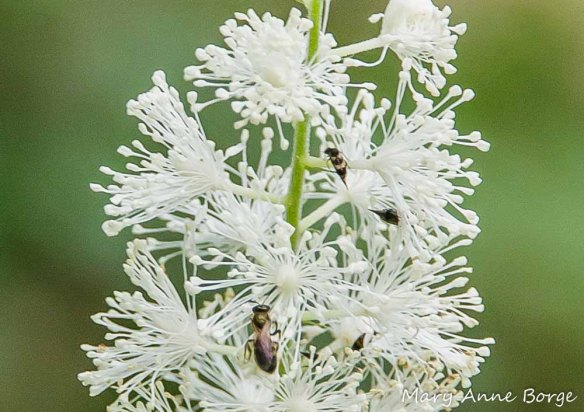
Black Cohosh (Actaea racemosa, syn. Cimicifuga racemosa) with Tumbling Flower Beetle (Falsomordellistena pubescens) in upper right
The Tumbling Flower Beetles were joined by at least three species of Longhorn Beetles, the Banded Longhorn Beetle (Typocerus velutinus), and two others, Metacmaeops vittata, and Analeptura lineola.
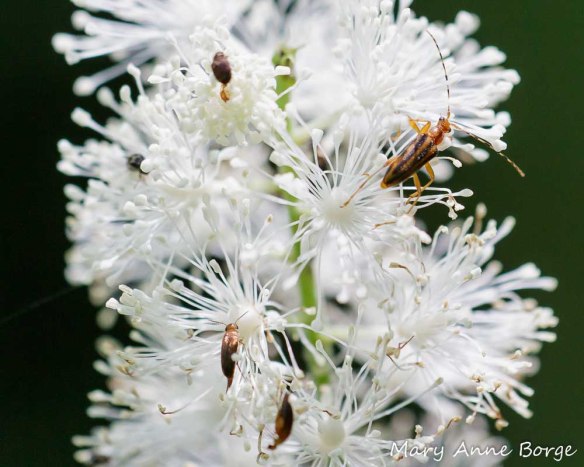
Black Cohosh (Actaea racemosa, syn. Cimicifuga racemosa) with Longhorn Beetle (Metacmaeops vittata), upper right, and Tumbling Flower Beetles (Mordellistena fuscipennis)

Black Cohosh (Actaea racemosa, syn. Cimicifuga racemosa) with Longhorn Beetle (Analeptura lineola), center, and Tumbling Flower Beetle (Mordellistena fuscipennis)
For an insect, visiting Black Cohosh flowers is not without its risks. Predators like the perfectly camouflaged Crab Spider in the photo below may be lurking in the shadows, waiting for an unwary victim.

Crab Spider with a fly victim (upper left) on Black Cohosh (Actaea racemosa, syn. Cimicifuga racemosa) with bee and Tumbling Flower Beetle
Black Cohosh is the only food Appalachian Azure butterfly caterpillars can eat. Female butterflies lay their eggs on flower buds. When the caterpillars hatch, they begin eating the buds and flowers, moving on to leaves if no flowers remain. Like the other Azure butterfly caterpillars, the Appalachian Azure caterpillars are protected by ants in exchange for the delicious honeydew the caterpillars excrete. Depending on the species, ants have different forms of defensive weapons; they may bite, sting, or spray an acid at their enemy targets, deterring even birds from their prey.
Although I have seen Appalachian Azure caterpillars, I’ve never seen the butterfly. The Appalachian Azure closely resembles the Summer Azure, pictured below.
People use Black Cohosh, primarily the root, for medicinal purposes. Black Cohosh contains chemical compounds that are anti-inflammatory, antirheumatic, and that have efficacy in managing female reproductive system problems. Black Cohosh is approved in Germany for treating menopausal symptoms. Several indigenous Native American tribes also used Black Cohosh to treat rheumatism and other ailments.
Black Cohosh is native primarily in the eastern United States and the Canadian provinces of Quebec and Ontario. It grows in rich, moist woods, in ravines and on slopes. Its height can range from just over two feet (.7 meters) to as much as eight feet (2.5 meters). Black Cohosh will light up a shade garden, blooming from late June through early August.
Who uses Black Cohosh? Insects do, including bees, flies, beetles, ants, and butterflies; spiders and other predators of the insects feeding there do, and even people use it, for medicinal purposes and for the beauty it brings to a garden.
Related Posts
Resources
Cech, Rick; Tudor, Guy. Butterflies of the East Coast. 2005.
Eaton, Eric R.; Kauffman, Ken. Kaufman Field Guide to Insects of North America. 2007.
Eisner, Thomas. For Love of Insects. 2003.
Evans, Arthur V. Beetles of Eastern North America. 2014.
Foster, Steven; Duke, James A. A Field Guide to Medicinal Plants and Herbs of Eastern and Central North America. 2000.
Hoffmann, David. Medical Herbalism. 2003.
Marshall, Stephen A. Insects Their Natural History and Diversity. 2006.
Rhoads, Ann Fowler; Block, Timothy A. The Plants of Pennsylvania. 2007
Willmer, Pat. Pollination and Floral Ecology. 2011


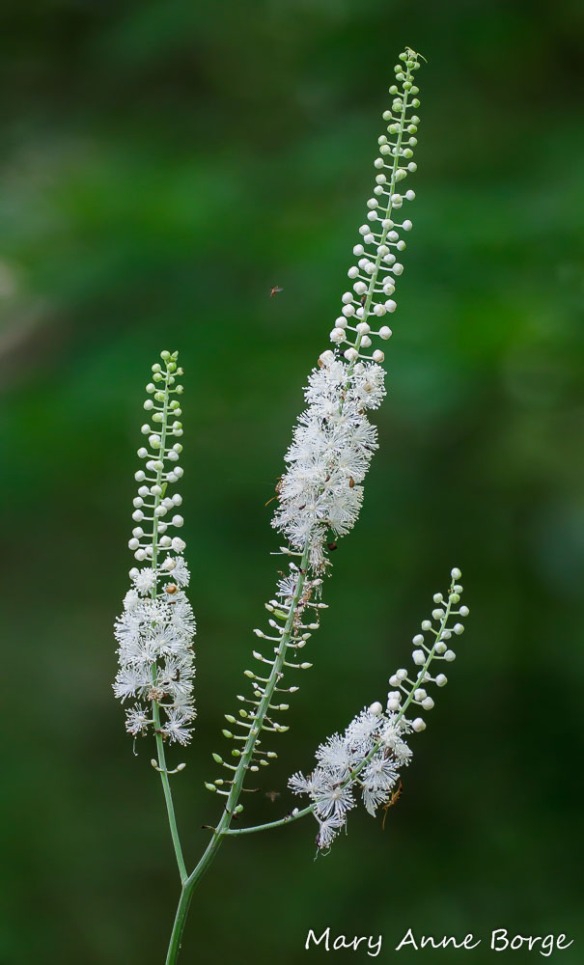
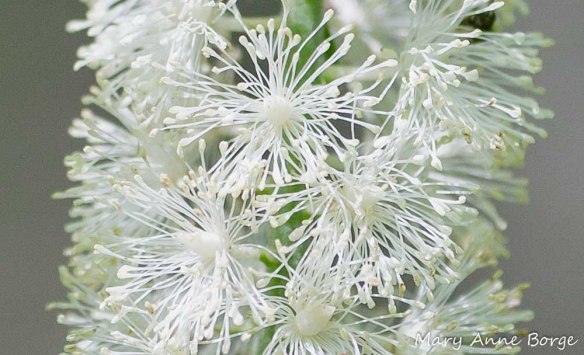
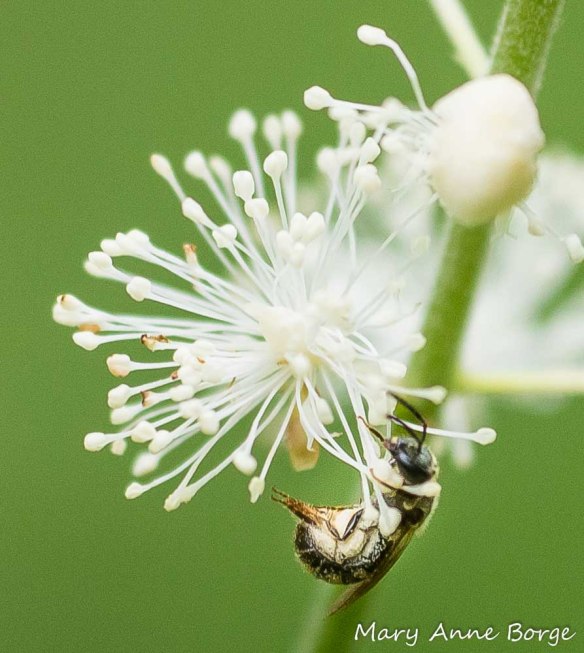
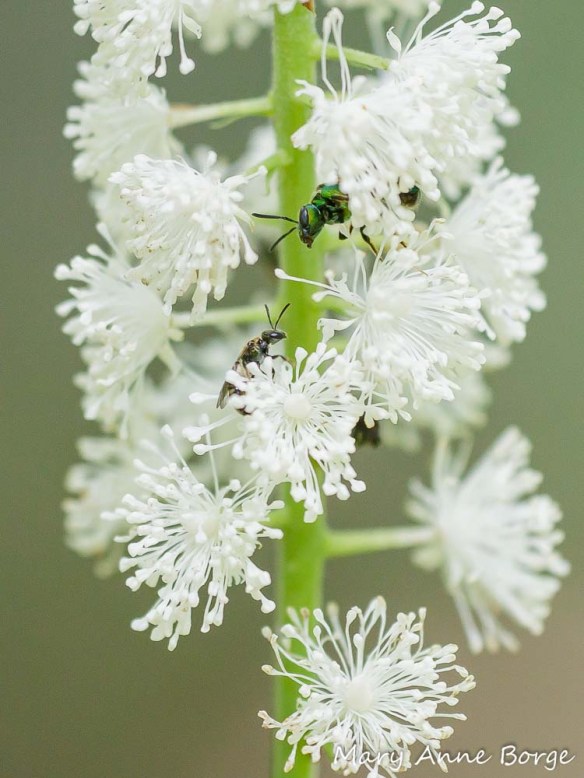

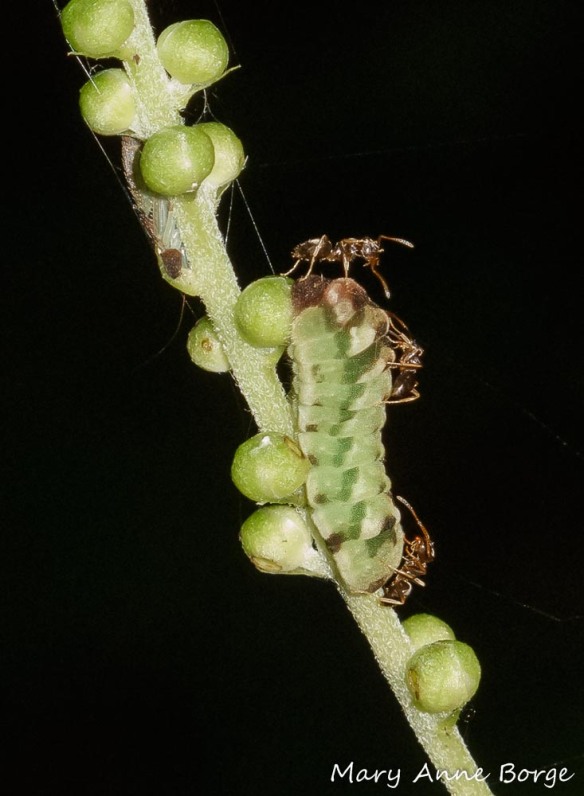

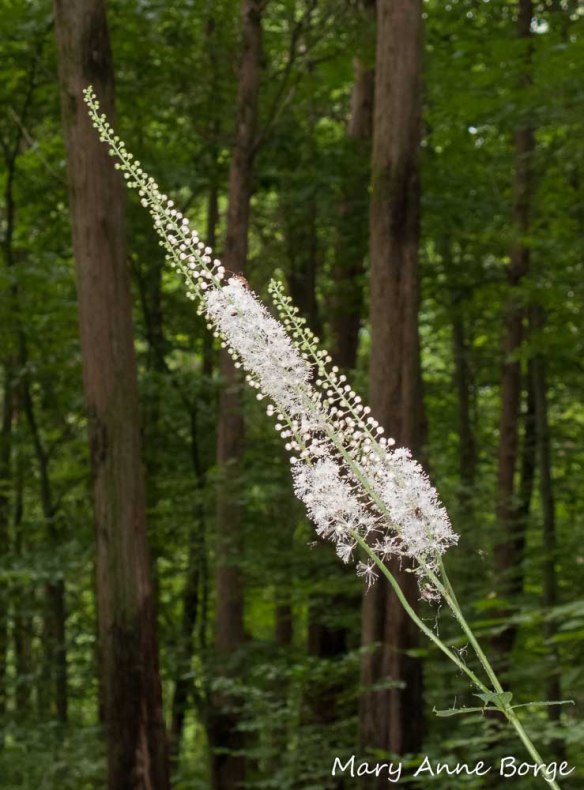
A wonderful post, rich in information and with such beautiful photos. Thank you, Mary Anne.
Thanks, Monica, I’m glad you enjoyed it.
Interesting and informative article, with wonderful photos! Thanks for sharing!
Thanks, Sue!
Thank-you Mary Anne! Your posts light up my day. Now, I know to look for black cohosh at night, too. Bugbane….such gorgeous photos!! A grateful reader, Patricia Merkel
You have to love those Tumbling Flower Beetles. Great macro!
Thanks, Jean! You do have to love them!
Nice photos of the fairy candles. And I see you referenced Thomas Eisner’s book which I love.
Thanks! I like Eisner, too.
Thanks, great article!
Thanks, Deedee!